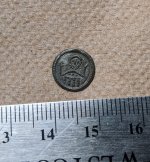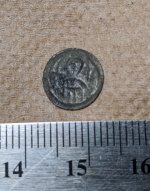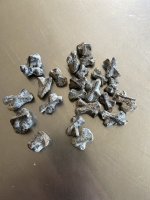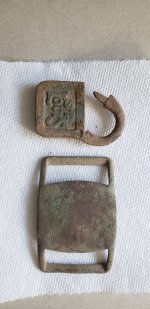paleomaxx
Hero Member
- Aug 14, 2016
- 825
- 6,779
- 🥇 Banner finds
- 6
- Detector(s) used
- Deus XP
- Primary Interest:
- All Treasure Hunting
When I can't go detecting I sometime amuse myself by buying and looking through older European coins. This one was particularly odd and I haven't had much luck identifying it:


It was labeled as a Hungarian coin from between 1173 and 1196, but that's all the info with it and I can't find any conclusive matches. It's a uni-face coin (if it even is a coin); the design on the reverse appears to be the negative impression of the figure holding the cross. It's absolutely tiny too, barely 10mm across. The material appears to be billon, and it's in fantastic condition if it is indeed from the 1100s. What do you guys think, anyone recognize it?


It was labeled as a Hungarian coin from between 1173 and 1196, but that's all the info with it and I can't find any conclusive matches. It's a uni-face coin (if it even is a coin); the design on the reverse appears to be the negative impression of the figure holding the cross. It's absolutely tiny too, barely 10mm across. The material appears to be billon, and it's in fantastic condition if it is indeed from the 1100s. What do you guys think, anyone recognize it?



 Looks like the collection was put together in the 60s or 70s, definitely pre-internet research! Most are at least in the ballpark, but this one had the least information on the envelope so they may have had the most trouble attributing it.
Looks like the collection was put together in the 60s or 70s, definitely pre-internet research! Most are at least in the ballpark, but this one had the least information on the envelope so they may have had the most trouble attributing it. 

